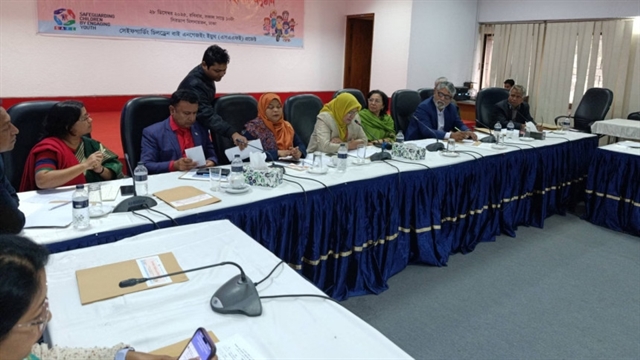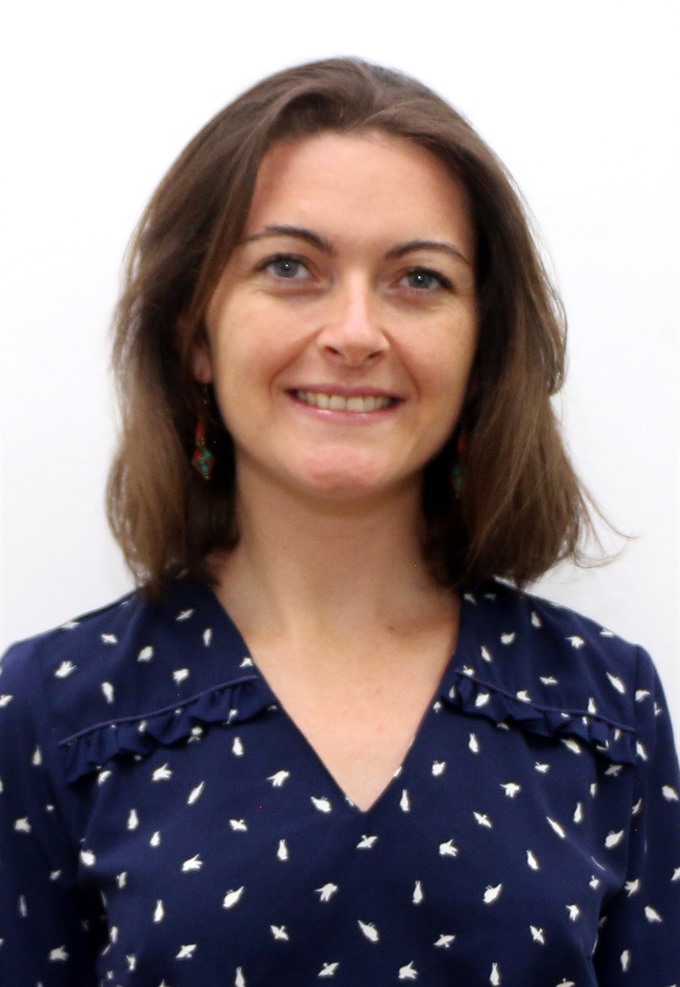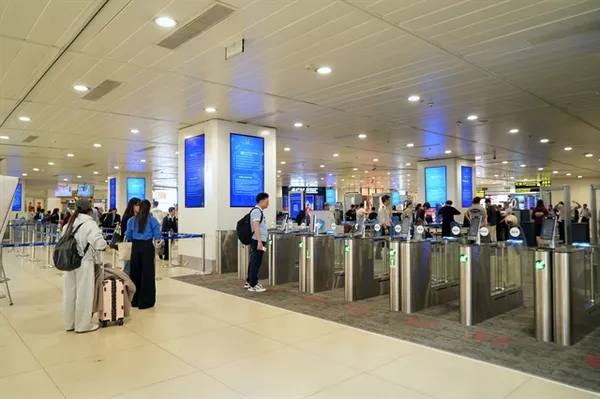 Life & Style
Life & Style

A child who suffers from autism spectrum disorders struggles with communication, language, speech and sensory skills. These children often have unusual responses to sensory inputs. The article by Tiphaine de Torcy from Family Medical Practice, Hà Nội offers some advice to therapists and families who take care of children with autism spectrum disorders
 |
| Tiphaine de Torcy is a speech therapist at Family Medical Practice, Hà Nội. — Photo courtesy of Family Medical Practice, Hà Nội. |
By Dr. Tiphaine de Torcy*
A child who suffers from autism spectrum disorders struggles with communication, language, speech and sensory skills. These children often have unusual responses to sensory inputs.
Here is some advice to therapists and families who take care of children with autism spectrum disorders:
How to stimulate sensory skills and facial motricity (motor functions)?
 |
Responding appropriately to a sensory input is often hard for an autistic child. He can be scared or surprised by a sound or a picture, without apparent reason.
Sensory inputs are everywhere in daily life: during a conversation, in a classroom where all children need to listen, look, sit on a chair and manipulate material, among other activities.
A specific work should be provided on each sensory modality such as vision, hearing and touch.
With sensory stimulations through textures, sounds and pictures, we can encourage a child to explore different inputs as much as possible. For example, discovering how soft a teddy is, understanding that some sounds are noisy while others are calm as well as the meaning of these sensations. A child can then learn how to react in an appropriate context. A fire siren and a music concert are both noisy, but we do not react to them in the same way.
With such sensory learning, an autistic child is able to categorise different inputs and adapt his behaviour.
Facial sensibility is of particular concern because this involves feeding and speech. Parents and therapists may work on facial motricity with the child in front of a mirror showing facial emotions, motricity exercises, or even making funny faces. The main goals remain the acquisition of awareness and control of facial movements.
How to interact with and develop language in an autistic child?
With developmental disorders, communication and language may be developed by alternative and augmentative communication such as “Makaton”, a language programme using signs and symbols, founded by Margaret Walker, a British speech and language therapist.
To interact with someone, pre-skills are needed: eye contact, joint attention, ability to choose, imitation skills, taking turns, non-verbal communication and pointing, etc. Without these skills, an efficient interaction appears difficult.
Autistic children struggle in mastering these pre-skills. Despite a wishto communicate, they have difficulties to converse with their peers or family. Several everyday situations become difficult and frustrating.
But with early intervention, the therapist can help the family to interact efficiently with the child.
The first step is to strengthen as much as possible a non-verbal style of communication with gestures, imitations and sounds to strengthen the pre-skills of the child and help him communicate actively.
For example, if the child needs a glass of water, he learns that he needs to look at his mother, points to a glass and then sign, indicating he is thirsty. This way, he expresses himself, is understood by others and is willing to learn more in order to express even more.
Gaming is also essential to develop communication. Through games, an autistic child can use all the communication pre-skills, learn to take turns, follow rules andshare an activity. They will not hesitate to play with other kids and will be willing to communicate more.
How to develop language concepts?
Once communication skills are mastered, language can be developed step by step: lexical, syntactic and pragmatic.
However, basics of language learning, such as categorisation or generalisation, often remain abstract to a child. To make it more concrete, visual support with pictures, drawings or pictograms is helpful. We can also associate visual support with signs so that the child understands the language better.
Language is not only a code but also a web of concepts. Alternative and augmentative communications are amazing solutions to develop the language. These non-verbal communications, based on visualisation and body language, allow children with communication disorders to actively develop their language.
Besides, the awareness of time and space is the basis of language. We must help children to anticipate situations through routines and habits. Anticipation pushes children to build mental pictures of situations and encourages them to behave appropriately.
A visual schedule is an efficient way to give a concrete idea of time: through pictures or drawings, we can create time and space such as school, lunch time, bedtime and different activities. With a visual timetable, a child has permanent indications and he can refer to them. This way, he can remember better what has happened and what will come after.
Habits and routines are also very important. With habits, a child is able to prepare himself actively for a situation instead of being surprised or passive. Hence, he becomes more autonomous. — Family Medical Practice
* Tiphaine de Torcy is a speech therapist trained in France. Before coming to Việt Nam, she worked in private clinics and in specialised establishments for deaf children in Martinique, France, and China.
She currently works at Family Medical Practice, Hà Nội, where she provides assessments and facilitates rehabilitation for children, teenagers and adults in the fields of voice, speech, language, communication and learning.
For more advice on any medical topics, visit Family Medical Practice Hanoi at: 298 I Kim Mã St, Ba Đình Dist. Tel: (024) 3843 0748. E: hanoi@vietnammedicalpractice.com or https://www.vietnammedicalpractice.com.
FMP’s downtown Hồ Chí Minh location is: Diamond Plaza, 34 Lê Duẩn St, District 1; 95 Thảo Điền St, Dist 2. Tel: (028) 3822 7848. E: hcmc@vietnammedicalpractice.com
FMP Đà Nẵng is located at 96-98 Nguyễn Văn Linh St, Hải Châu Dist. Tel: (0236) 3582 699. E: danang@vietnammedicalpractice.com




